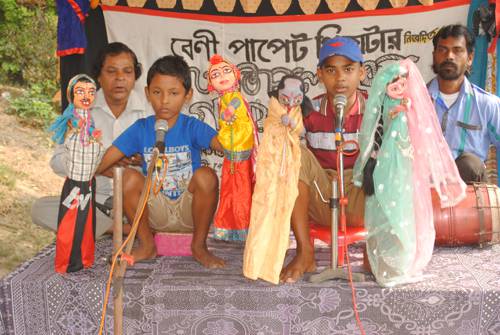
FAQ About The Cultural Significance of Puppetry in Educational Storytelling

What is puppetry in educational storytelling?
Puppetry in educational storytelling involves the use of puppets as a vehicle to convey stories, lessons, and information. This technique harnesses the power of visual and interactive elements to engage learners and make the educational experience more memorable. Puppets can depict characters or scenarios, providing an imaginative way to explore narratives and educational content.

How does puppetry contribute to cultural preservation?
Puppetry plays a vital role in cultural preservation by bringing traditional stories, myths, and folklore to life. Through puppetry, educators can share cultural narratives with new generations in a dynamic and engaging format, preserving the rich heritage and values embedded in these stories. Puppeteers often incorporate traditional languages, costumes, and themes, ensuring that cultural elements remain intact and respected.

Why is puppetry effective in engaging diverse audiences?
Puppetry is effective in engaging diverse audiences because it combines visual, auditory, and kinesthetic elements, appealing to a wide range of learning styles. The universal and often whimsical nature of puppets transcends language barriers, making it easier to communicate messages across different cultural backgrounds. Additionally, puppetry allows for expression of complex ideas in an accessible and relatable manner, facilitating inclusive education.

What are some examples of puppetry used in educational settings?
Examples of puppetry in educational settings include using hand puppets to teach young children about emotions, employing marionettes to act out historical events, and shadow puppetry to illustrate scientific concepts or spiritual stories. Classroom teachers and museum educators often utilize these methods to create immersive learning experiences that captivate and educate audiences of all ages.

How can puppetry enhance storytelling in classrooms?
Puppetry enhances storytelling in classrooms by making stories more tangible and interactive. Puppets can be used to represent characters, allowing students to visualize and emotionally connect with the story. This method encourages active participation, stimulates imagination, and reinforces educational content by providing a multi-sensory learning experience.

Are there any historical roots of puppetry in education?
The historical roots of puppetry in education can be traced back to ancient cultures that used puppets in ceremonial rituals and storytelling practices. In many societies, puppets were used to communicate religious narratives and moral lessons. Over time, educators have adopted these techniques to teach a wide range of subjects, maintaining a legacy of using puppetry as a teaching tool.

What skills can students develop through puppetry in education?
Students can develop a variety of skills through puppetry, including creativity, communication, collaboration, and critical thinking. By creating and manipulating puppets, students enhance their fine motor skills and artistic expression. Participating in puppet performances cultivates public speaking and storytelling abilities, while group activities foster teamwork and interpersonal skills.

Can puppetry be integrated into digital learning environments?
Yes, puppetry can be integrated into digital learning environments using virtual puppetry tools and video platforms. Educators can create digital puppet shows or animations to teach concepts remotely, making the learning experience interactive and engaging despite the physical distance. Digital puppetry expands access to educational materials and allows for innovative storytelling techniques.

What challenges might educators face when using puppetry?
Educators may face challenges such as a lack of resources, training, and materials for creating puppets and puppet theaters. Additionally, integrating puppetry into curricula requires careful planning to align with educational objectives. Overcoming these challenges involves sourcing appropriate materials, engaging in professional development, and using creativity to fit puppetry into diverse subjects.

How does puppetry support language development in children?
Puppetry supports language development by providing a fun and engaging medium for children to hear and practice new vocabulary. Through puppet shows, children are exposed to storytelling structures and dialogue, which enhances their understanding of language. Additionally, interacting with puppets encourages verbal expression, pronunciation, and listening skills in a low-pressure setting.

What cultural themes are commonly explored through puppetry?
Common cultural themes explored through puppetry include traditional folklore, myths, legends, and historical events. Puppetry is also used to address contemporary societal issues, cultural diversity, and heritage. By using puppets, educators can introduce complex cultural themes to audiences in a way that is engaging, respectful, and thought-provoking.

How do digital technologies impact the use of puppetry in education?
Digital technologies have expanded the possibilities for puppetry in education by enabling virtual performances and interactive storytelling applications. Tools such as augmented reality (AR) and virtual reality (VR) can create immersive puppet experiences, while online platforms allow educators to reach wider audiences. Digital tools provide innovative ways to integrate traditional puppetry with modern educational practices.

How does puppetry encourage emotional development in students?
Puppetry encourages emotional development by allowing students to explore and express feelings through characters. It creates a safe space for discussing emotions and developing empathy, as children can project their experiences onto puppet characters. Through role-playing and storytelling, students can better understand complex emotions and gain insights into social dynamics.

What are some popular types of puppetry used in storytelling?
Some popular types of puppetry used in storytelling include hand puppets, marionettes, shadow puppets, and ventriloquist dolls. Each type offers distinct visual and performance qualities, appealing to various storytelling needs. Hand puppets are often used for direct interaction, marionettes provide intricate movements, shadow puppets create dramatic silhouettes, and ventriloquist dolls add comedic or realistic dialogue.

How can puppetry promote inclusivity in educational settings?
Puppetry can promote inclusivity by providing a platform for diverse voices and narratives. Puppets can accurately represent different cultures, languages, and abilities, introducing students to a wide spectrum of human experiences. This approach helps foster a more inclusive educational environment that respects and values diversity, encouraging acceptance and understanding among students.

Is puppetry used in adult education as well?
Yes, puppetry is used in adult education to address topics such as health education, community issues, and workplace training. Puppets can simplify complex topics, making them accessible and engaging for adult learners. This approach is particularly effective in community outreach programs where visual storytelling can transcend literacy barriers and enhance message retention.

How does puppetry align with modern educational goals and standards?
Puppetry aligns with modern educational goals by fostering creativity, critical thinking, and communication skills—key competencies in contemporary education standards. By integrating puppetry into lesson plans, educators can promote active learning, intercultural understanding, and emotional intelligence, which are important aspects of a well-rounded education. It also supports STEM and STEAM initiatives by encouraging exploration and innovation.

What role does puppetry play in storytelling traditions around the world?
Puppetry plays a significant role in storytelling traditions around the world, with each culture adopting unique styles and narratives. In Asia, shadow puppetry is a revered art form, while Europe has rich traditions in marionette theater. In Africa and Latin America, puppets often convey folklore and spirituality. These traditions highlight the diversity and universality of puppetry as a storytelling medium.

Can puppetry be adapted for social and emotional learning programs?
Yes, puppetry is highly adaptable for social and emotional learning programs. Puppets can be used to embody scenarios that teach empathy, conflict resolution, and emotional intelligence. By role-playing situations, students can practice social skills and learn to handle emotions constructively. This hands-on approach to learning promotes self-awareness and empathy among students.

What materials are typically used to create educational puppets?
Educational puppets can be made from a variety of materials including fabric, felt, paper, foam, and wood. The choice of materials often depends on the type of puppet—hand puppets may use soft fabrics, while marionettes might require hard wood or plastic for structure. Recycled materials are also popular for crafting puppets, promoting environmental sustainability in art projects.
